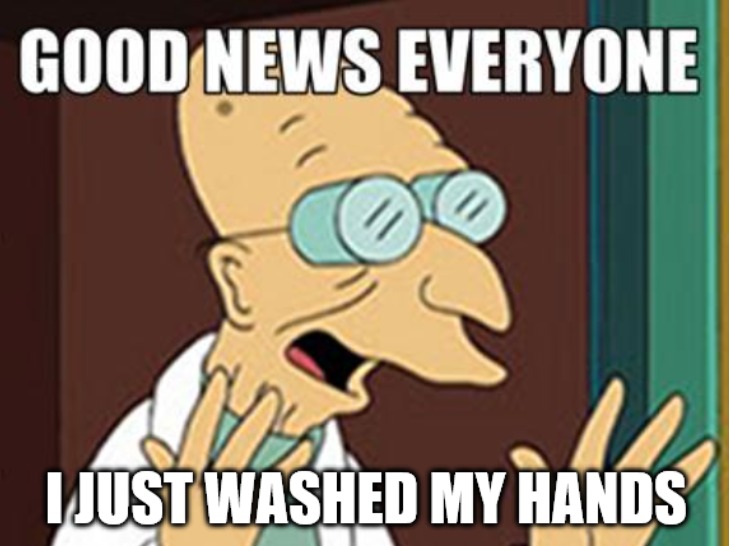Viruses are rogue pieces of genetic material.
Dorothy H. Crawford
Want to read the beginning of this series? here is part 1 and part 2.

How High Is Your Risk?
How much will you be affected? 81% of cases will have no symptoms, to mild symptoms. [1] Of those, 14% will require hospitalization and 5% need ICU care. People admitted to an ICU had some other underlying disease present. [2] Those most at risk are patients with one of the following: diabetes, heart disease, immunosuppression or lung disease. Anyone over the age of 65 is also at risk. [3]
[4] This study talks about the people most at risk of dying and compares them to those who survived. Those over age of 65 and with underlying health conditions (in this case heart disease, kidney disease, and lung disease) fell into the high mortality group. Coronavirus may enter the blood as these patients had no secondary infection but showed signs of sepsis, a blood infection. These people were also the ones who were the most ill and their outcomes were not great.

How Deadly Is It?
The data from Italy shows, the fatality rate from infection was totaled as 3.3 percent.[6] Not all of this is doom and gloom. Most of us will do fine. The death rate of the disease is being questioned. According to this study,[12] in China the death rate was .32% for anyone under the age of 60. Those older than 60 but younger than 80 had a 6.4% and those over 80 a 13.4% mortality. This is great news for the majority of young people. Our older population needs more safeguarding.
What About Testing?
The nasal swab method of testing is called RT-PCR. It tests for fragments of the RNA of the virus to see if you currently have it. No test is 100% accurate. Nothing is. Even alcohol or antibacterial soap has a .1% of microbes it cannot kill. Bear in mind, the RT-PCR test has a false negative rate of 30%.[7] Therefore, out of 100 people tested for the virus, 30 people will receive a false negative result.
What About Antibody Testing?
Antibody testing is still in a testing phase. Its accuracy is being questioned. Several tests are sold and deemed accurate. The FDA is not regulating these tests. NPR mentioned recently that these tests are prone to error as well. [8] These tests may falsely state that the person has antibodies to coronavirus. This is a false positive.
How does this affect us?
The main testing method has a false negative rate of 30%. That means the number of people who are infected is higher than the current number of confirmed cases. This in turn brings the death rate down lower.
In Los Angeles, the University of Southern California has conducted a study.[9] The study indicates that anywhere from 2.8% to 5.6% of people had exposure to coronavirus. Adjusting for error, the number of people exposed to coronavirus is between 221,000 to 442,000. As of 4/25 the total number of deaths was 913. That means the death rate is between 0.2% and 0.4% for all ages.
In Santa Clara county, the number of those with antibodies was between 2.5% and 4.6%. Representing at least a 50 fold increase over their confirmed cases. [10] This significantly drops the death rate in Santa Clara as well. With summer around the corner, things are looking brighter.
Anthony Fauci authored a paper where he states “the case fatality rate, may be considerably less than 1%”. [11] This puts COVID-19 and it’s coronavirus thugs around the level of deaths from flu. This Lancet study mentions that in China the infection fatality rate was 0.66% across all ages. Anyone over 80 had a rate of 18.4%.[12] Unless you are in the high risk group, odds are on your side.

How can we cure or kill it?
There is no internal cure for Coronavirus. Your army, the immune system, will do it’s best to fight it. We can give it a helping (clean) hand. Know this one thing. Yes, you can prevent coronavirus but the virus can be killed. There are the CDC recommendations [5] that are great for preventing and slowing the spread, but let’s look at handwashing a little more in depth.
Soap kills the virus.[13] Alcohol will dry coronavirus out like how toilet paper hoarders emptied store shelves. Alcohol is not as effective as soap. Remember coronavirus is surrounded by a layer of lipid, a.k.a. a fat or oil. This lipid holds the RNA, the guts, needed for replication in place until it is time to be injected in our cells.
Soap contains amphiphiles. These small fat-like structures can bind to the lipid layer of the virus. Soap binds to water as well as competing with the structures of the viral shell. What you get is a ripping apart of the virus, effectively killing it. Alcohol works similarly, but is less effective especially at concentrations below 60 percent. It sounds like messy work, but it has a great perk. A clean getaway. Who knew a cheap bar of soap could wash your worries away.
The takeaway is when soap is around wash your hands; if there is no soap alcohol will do.
Enough about coronavirus, next we will cover (no mask needed) prevention strategies. With the odds in our favor, it doesn’t hurt to do more. This is most helpful for those at risk as well. After all, an ounce of prevention is worth a pound of cure. Right now, that cure doesn’t exist.
Ready to read part 4?
- https://www.who.int/docs/default-source/coronaviruse/clinical-management-of-novel-cov.pdf
- https://www.cdc.gov/mmwr/volumes/69/wr/mm6913e2.htm?s_cid=mm6913e2_w
- https://www.cdc.gov/mmwr/volumes/69/wr/mm6912e2.htm?s_cid=mm6912e2_w
- https://www.thelancet.com/journals/lancet/article/PIIS0140-6736(20)30566-3/fulltext
- https://www.cdc.gov/coronavirus/2019-ncov/prevent-getting-sick/prevention.html
- https://www.medrxiv.org/content/10.1101/2020.03.04.20031104v2.full.pdf
- https://www.medrxiv.org/content/10.1101/2020.02.11.20021493v2.full.pdf
- https://www.npr.org/sections/health-shots/2020/04/15/834497497/antibody-tests-for-coronavirus-can-miss-the-mark
- http://www.publichealth.lacounty.gov/phcommon/public/media/mediapubhpdetail.cfm?prid=2328
- https://www.medrxiv.org/content/10.1101/2020.04.14.20062463v1
- https://www.nejm.org/doi/full/10.1056/NEJMe2002387
- https://www.thelancet.com/pdfs/journals/laninf/PIIS1473-3099(20)30243-7.pdf
- https://twitter.com/PalliThordarson/status/1236549305189597189
